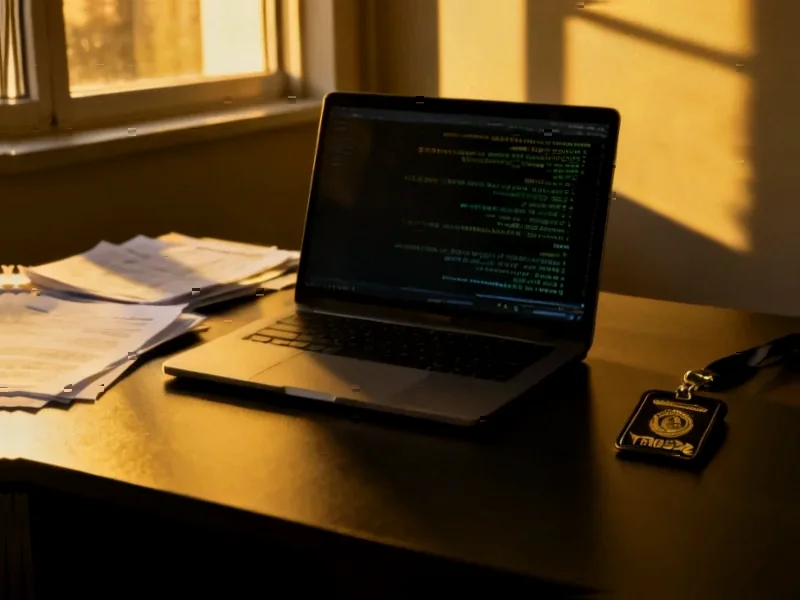According to TechCrunch, Peter Williams, the former general manager of L3Harris’ Trenchant division, pleaded guilty last week to stealing eight cyber exploits worth approximately $35 million and selling them to a Russian broker for $1.3 million in cryptocurrency between 2022 and July 2025. The 39-year-old Australian, known internally as “Doogie,” used his “super-user” access to transfer the zero-day vulnerabilities via external hard drives from Trenchant’s offices in Sydney and Washington D.C., then framed a subordinate by firing him for allegedly stealing Chrome exploits that he never had access to. Williams sold the tools to what appears to be Russia-based Operation Zero, using encrypted channels and the alias “John Taylor,” while ironically leading the internal investigation into the very leaks he created. This case exposes fundamental vulnerabilities in how Western nations protect their most sensitive cyber capabilities.
The Super-User Problem in Cyber Defense
Williams’ ability to maintain “super-user” access without oversight represents a critical failure in privilege management that extends far beyond Trenchant. The cybersecurity industry has long focused on external threats while underestimating the insider risk, particularly among senior leadership. What makes this case particularly alarming is that Williams’ position gave him visibility into all network activity, logs, and data—essentially allowing him to monitor whether anyone was monitoring him. This creates a dangerous paradox where those with the most access have the greatest ability to conceal misuse. The fact that he could transfer exploits using basic external storage devices suggests that even sophisticated “air-gapped” networks remain vulnerable to determined insiders with legitimate access.
The Underground Cyber Arms Market Matures
The pricing dynamics in this case—$35 million in value for $1.3 million in payment—reveal how the underground exploit market is becoming more sophisticated. Williams essentially accepted a massive discount for immediate, anonymous payment through cryptocurrency, reflecting the liquidity preferences of sellers in this shadow economy. The involvement of multiple brokers, including the mysterious appearance of Williams’ code with a South Korean broker after he sold it to Russian contacts, suggests these tools circulate through complex networks that even sellers don’t fully control. As previous reporting on exploit markets has shown, the line between private brokers and state actors has become increasingly blurred, with tools often changing hands multiple times before reaching their ultimate users.
The Coming Regulatory Reckoning
This incident will inevitably trigger a regulatory and compliance overhaul across the cyber defense contractor industry. We’re likely to see mandated separation of duties, where no single individual maintains both technical access and oversight authority. The fact that Williams could investigate his own crimes underscores the need for independent internal security teams with their own reporting structures. Government contracts will probably soon require third-party audits of access controls and monitoring systems for any company handling classified cyber capabilities. The industry’s acquisition patterns—as seen in L3Harris’ purchase of Azimuth and Linchpin Labs—may also face scrutiny regarding how security cultures merge during corporate integrations.
Geopolitical Consequences and Capability Erosion
The transfer of eight zero-day exploits to Russian hands represents a significant erosion of Western intelligence capabilities that will take years to remediate. Each exploit sold not only provides adversaries with immediate access but also educates them about Western tradecraft and targeting preferences. The long-term damage extends beyond the specific vulnerabilities—Russian intelligence now understands Trenchant’s technical approaches, development methodologies, and potentially even their detection evasion techniques. This creates an asymmetric advantage where Russia can both use these tools and develop countermeasures against similar Western capabilities. The timing is particularly concerning given current geopolitical tensions, as these tools could be deployed against Ukrainian allies or Western critical infrastructure.
The New Normal: Distributed Trust Architectures
Looking forward, this case will accelerate adoption of technical and organizational models that don’t rely on trusting any single individual. We’ll see increased use of cryptographic techniques like multi-party computation, where multiple authorized parties must collaborate to access sensitive materials. Behavioral analytics and AI monitoring of privileged user activity will become standard, despite the privacy concerns this raises. The industry may also move toward more fragmented development processes where no single engineer or manager has visibility into complete exploit chains. As industry discussions have highlighted, the balance between operational security and effective collaboration remains one of the most challenging problems in offensive cybersecurity.
The Williams case represents a watershed moment that will force the entire cyber defense ecosystem to confront its foundational trust assumptions. The solutions will need to be both technological and cultural, addressing not just how we secure digital assets, but how we manage human access in an industry where the greatest threats increasingly come from within.





Your article helped me a lot, is there any more related content? Thanks!